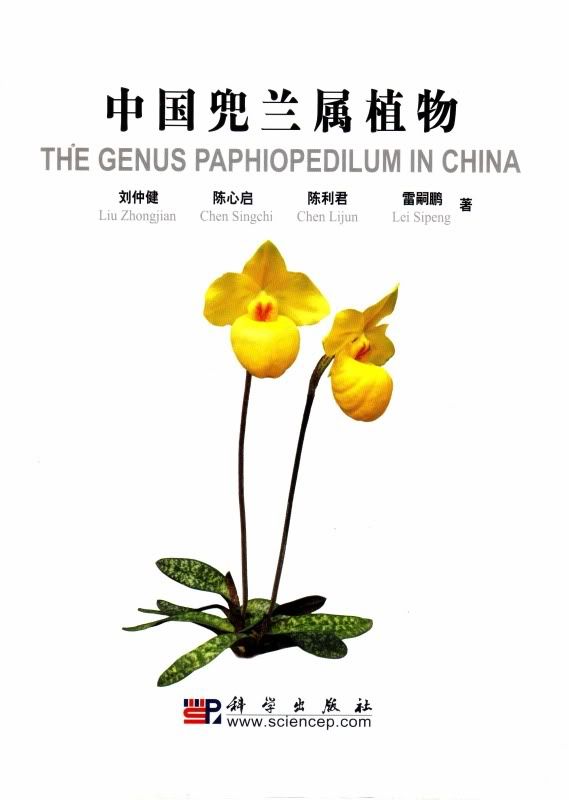I received a copy of this book last week, so I'll write up a little review of sorts.
What I like:
-The
in-situ photographs are just phenomenal. Almost every species has an
in-situ photo, and the vast majority have several. There is even an
in-situ photograph of
P. xfanaticum. These alone make this book worth it for me.
-Almost all species also have a landscape habitat photo. They really put the species in environmental context.
-While this is a China-specific Paph book, the authors also provide a synopsis of the species not found in China. Their coverage is exactly the same as those found in China save the line drawings and multiple photographs.
-Surprisingly, there isn't an entirely new treatment of the
P. glanduliferum complex to join those of Garay/Cribb/Braem etc. They stuck with Cribb's treatment.
-The authors are VERY judicious with the correct usages of form/variety.
-I found the treatment of natural hybrids to be especially enjoyable.
-The authors provide a pretty awesome account of the
P. delenatii found growing on limestone in Yunnan. I had only heard whisperings. They include
in-situ photos!
Where it falls short:
-RANGE MAPS! There aren't any. You only have a county map of China in the front. These should be required for such monographs!
-The authors are lumpers in the extreme. I'm in favor of recognizing geographic variation no-matter the taxonomic rank. For example, no more
Paph. micranthum var.
eburneum. Similarly, the authors suggest sinking
P. thaianum into
P. godefroyae(??). You get the idea. To each their own, I suppose.
-The authors provided very little historic info on the various species. I suppose that isn't a requirement, but it certainly adds interest.
As a note, the majority of the introduction portions (cultivation, pollination, etc.) of the book are in Chinese. I don't really care about that. I can find that info elsewhere in Cribb's, Averyanov's, or Braem's books.
Bottom line: I'd get it. The photos are great, and the current price is impossible to beat.
I'm sure many of you are wondering where I got it. I purchased mine from yijiawang in this thread:
http://www.slippertalk.com/forum/showthread.php?t=13506. The book was shipped from Beijing on Monday and arrived to me in West Virginia on Thursday. That 5-day shipping is pricey, but it is at-cost and extremely fast. The book arrived in the original publisher's shrinkwrap.










